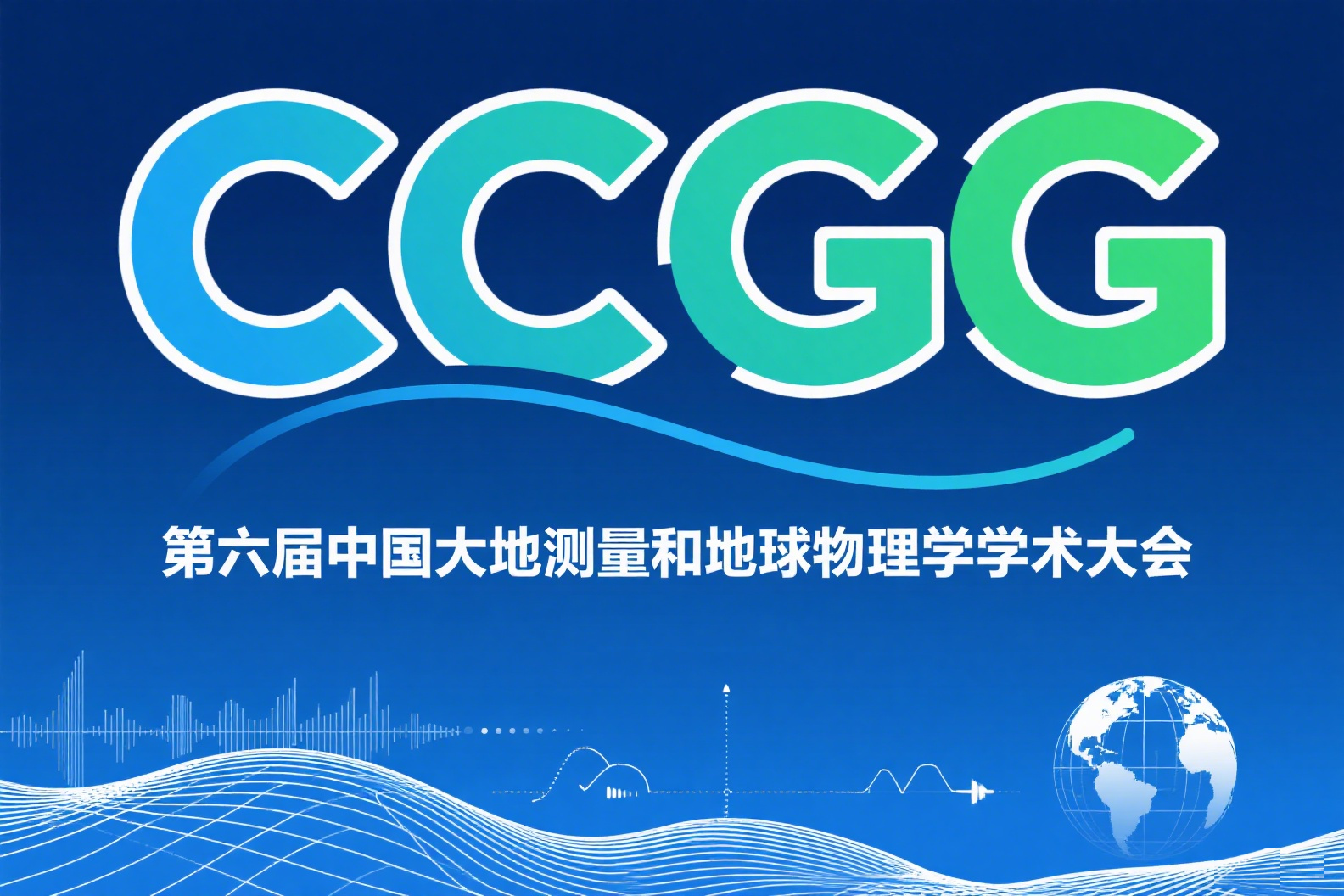The IUGG Electronic Journal Volume 17 No. 4 (1 April 2017)
INTERNATIONAL UNION OF GEODESY AND GEOPHYSICS
UNION GEODESIQUE ET GEOPHYSIQUE INTERNATIONALE
The IUGG Electronic Journal
Volume 17 No. 4 (1 April 2017)
This informal newsletter is intended to keep IUGG Member National Committees informed about the activities of the IUGG Associations, and actions of the IUGG Secretariat. Past issues are posted on the IUGG website (http://www.iugg.org/publications/ejournals/). Please forward this message to those who will benefit from the information. Your comments are welcome.
Contents
1. Unraveling Earth’s magnetic field with satellite data
2. Annual Report 2016
3. Report on geoscience education events 2016
4. News from the International Council for Science
5. Awards and honors
6. Obituary
7. Meeting calendar
1. Unraveling Earth’s magnetic field with satellite data
The Earth’s magnetic field can be thought of as a huge cocoon, protecting us from cosmic radiation and charged particles that bombard our planet with solar wind. Without it, life as we know it would not exist. Most of the field is generated at depths greater than 3000 km by the movement of molten iron in the outer core. The remaining 6% is partly due to electrical currents in space surrounding Earth, and partly due to magnetized rocks in the lithosphere – the rigid outer part of Earth, consisting of the crust and upper mantle. Although the lithospheric magnetic field is very weak and therefore difficult to detect from space, the European Space Agency (ESA) Swarm satellites are able to map its magnetic signals. After three years of collecting data, the highest resolution map of this field from space has been recently released. “By combining Swarm measurements with historical data from the German CHAMP satellite, and using a new modeling technique, it was possible to extract the tiny magnetic signals of crustal magnetization,” explained Nils Olsen from the Technical University of Denmark, one of the scientists behind the new map. Presented at the Fourth Swarm Science Meeting & Geodetic Missions Workshop (20-24 March 2017, Banff, Alberta, Canada), the new map shows detailed variations in this field, caused by geological structures in Earth’s crust, more precisely than previous satellite-based reconstructions.
IUGG President Michael Sideris gave a keynote talk at the Opening ceremony of the meeting highlighting the importance of long-term Earth observations from space and urging ESA as well as other international and national institutions, agencies and governmental bodies in charge of supporting Earth science research “to make all efforts to implement long-term satellite gravity and magnetic observation constellations with high accuracy that respond to the aforementioned need for sustained observation”(from Resolution 2 of the XXVI IUGG General Assembly, Prague, Czech Republic, 22 June – 2 July 2015).
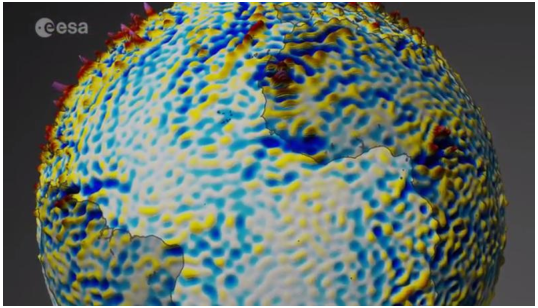
Lithospheric magnetic anomalies
The Opening ceremony of the Swarm science meeting can be watched on the ESA livestream channel: https://livestream.com/ESA/earthexplorer2017/videos/152244377. The talk by Michael Sideris begins at 1:50:00 of the recording (Source: ESA)
2. Annual Report 2016
The IUGG Annual Report provides a summary of the activities of the Union including its Associations, Union Commissions and Programs. Thanks to the inputfrom the Union Associations, the Union Commissions, and the International Lithosphere Program. The Annual Report 2016 is posted on the website: http://www.iugg.org/publications/reports/report2016.pdf. We invite you to download this impressive summary of last year’s activities.
3. Report on geoscience education events in 2016
IUGG and the Abdus Salam International Centre for Theoretical Physics (ICTP) continued cooperation in geosciences education. In 2016, IUGG co-sponsored six workshops and schools organized by ICTP and held in Brazil, Costa Rica, India, and Italy. Below are brief reports on the events.
Advanced School on Regional Climate Modeling over South America (15 - 19 February 2016, São Paulo, Brazil)
The Advanced school included lectures and extensive hands-on sessions on the theory of regional climate modeling and regional climate change while providing a background on regional climate modeling studies focused on the South America (SA) region. One of the main motivations for developing Regional Climate Models (RCMs) was the need to produce climate information at the regional level to assess the impacts of climate change. The ICTP regional climate modeling system, RegCM, is one of the most used RCMs worldwide. Its latest version, RegCM4, has been augmented in several aspects, in particular, towards the application of the model to very high resolution simulations permitting convection. Among the main model improvements in this direction are the implementation of non hydrostatic dynamics, the refinement of an advanced explicit cloud microphysics scheme and the full coupling with the MIT general circulation model (http://mitgcm.org), the CHYM hydrological model (developed by Cetemps Center of Excellence at the University of L'Aquila), and the CLM4.5 land surface model (http://www.cesm.ucar.edu/models/clm) including interactive vegetation and an augmented version of a chemistry/aerosol module. The SA region is affected by local climate feedbacks as well as large scale climate patterns, for example associated with Sea Surface Temperature (SST) anomalies, and RegCM4 has been shown to reproduce adequately SA climate and its variability.
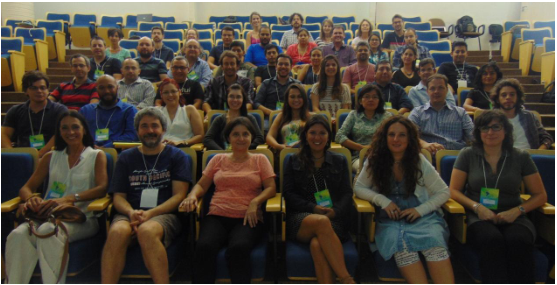
The main purpose of the school was to make the participants aware of the available climate data, and to train them to analyze and downscale these data to an adequate resolution to reproduce phenomena of interest. IUGG funds supported participation of young scientists from Peru, Argentina (female), and Uruguay (female). For more information on the school, please visit the website: http://indico.ictp.it/event/7618.
Workshop on the Theory and Use of Regional Climate Models (23 May - 3 June 2016, ICTP, Trieste, Italy)
The Workshop provided lectures and extensive hands-on sessions on the theory of regional climate change and regional climate modeling as well as on the use of the RegCM4 modeling system. The focus of the workshop was on the application of the RegCM4 to high resolution experiments, in particular within the framework of the CORDEX project (COordinated Regional Downscaling EXperiment) of the World Climate Research Programme (WCRP). During the workshop, the new features of the model were described andtested, and a new version of the model was released. In addition, the contribution of the RegCM community to the next phase of the CORDEX program was discussed. The workshop included a special session on the interactions between air quality, climate processes and climate change in diverse region of the world under the framework of the EU REQUA (Regional climate-air quality interactions) project. The workshop aimed at providing a forum for current and future model users to discuss relevant issues and formulate needs and priorities for further model development and dissemination.
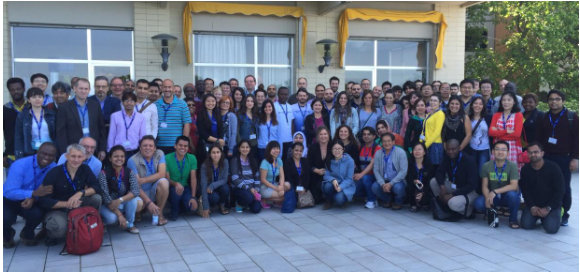
IUGG funds supported participation of four scientists from Burkina Faso (young scientist), Ghana (female scientist), Phillippines (female young scientist), and Vietnam (female young scientist). For more information on the workshop, please visit the website: http://indico.ictp.it/event/7613.
Summer School on Aerosol-Cloud Interactions (27 June - 1 July 2016, ICTP, Trieste, Italy)
Aerosol-cloud radiative, microphysical and dynamical interactions are a key determinant of the weather and climate. As reported by the Intergovernmental Panel on Climate Change (IPCC), these processes represent a major source of uncertainty for climate models. Aerosol-cloud interactions represent an active and fast moving research field. The Summer School consisted of basic and advanced lectures on the current knowledge of aerosol-cloud interactions physics and the representation of these processes in atmospheric models. About 50 international participants (including lecturers and local visitors) attended the school. During the first part of the school, basic lectures were given on warm and cold cloud microphysics, cloud condensation and ice nuclei activation as well as aerosol dynamical and microphysical processes. Lectures extended from basic thermodynamics knowledge at the aerosol and cloud droplet scale to more advanced processes dealing with populations of aerosol and droplets. This introduced the theoretical background on which state-of-the-art atmospheric models rely. In parallel, practical and theoretical introductions to the hand-on lab sessions based on the EULAG model (a simplified framework for studying cloud microphysics and dynamics) were also run.
During the second part of the school, examples of research including cloud to global scale studies were presented by diverse lecturers. Parameterizations ofdifferent complexity currently used in different modeling systems were introduced and discussed. Available web resources, useful for cloud studies (e.g., satellite observations) in general and modeling in particular were also presented. This made a very good introduction to the CFMIP international conference on cloud and climate that took place at ICTP during the week following the school, which all the selected participants attended. During the practical sessions, participants could also explore the sensitivity of a model to assumptions made, and critical parameters. Overall, there was a very positive atmosphere during theschool. Many interactive discussions took place during the scientific presentations, lab sessions and coffee breaks thanks to very motivated participants and the availability of invited lecturers.
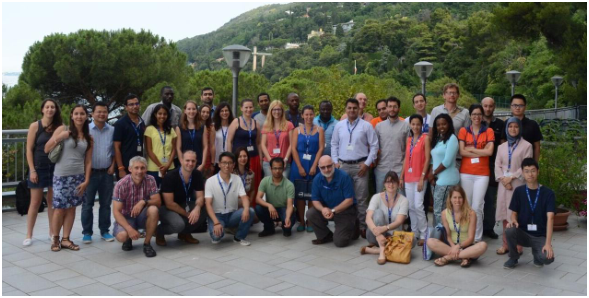
For more information on the school, please visit the website: http://indico.ictp.it/event/7614.
Advanced School on Earth System Modelling for Climate Change and Regional Impacts over South Asia (18 – 29 July 2016, Pune, India)
The school attracted climate modelers and 41 students and young scientists from several countries including Brazil, India, Iran, Kenya, Korea, Madagascar, Sri Lanka, and Tanzania. The school focused on the Indian Ocean and Monsoon dynamics and prediction. The training school was thus aimed at Ph.D. students, post-docs and early career scientists from research institutes and universities from the Indian Ocean rim countries. The school covered many topics of Earth system modeling from the ocean and atmosphere systems to land and ocean biogeochemistry. The newly developed IITM Earth System Model (IITM-ESM; http://journals.ametsoc.org/doi/abs/10.1175/BAMS-D-13-00276.1) was central to the school and was used for practical sessions. The model contributes to the next Intergovernmental Panel on Climate Change Assessment Report 6 (IPCC AR6) simulations. The ocean component of the IITM-ESM is the GFDL Modular Ocean Model (MOM; https://www.gfdl.noaa.gov/mom-ocean-model). The activity was based on lectures from world experts in Earth system modeling from Brazil, India, Italy, UK, and USA. The school was organized in daily morning sessions with key lectures divided into two main streams (Part A: Fundamentals and Part B: Applications), and daily afternoon sessions devotedto practical training with the IITM-ESM (Part C: Hands-on sessions). Practical sessions were the backbone of the school, with hands-on training in the use of the IITM Earth System Model. The students were guided through the necessary steps for setting up a simulation, from generating the input fields to choosing the appropriate physical settings, to finally analyzing and post-processing the data. The IUGG grant allowed students from Kenya, Madagascar, Sri Lanka, and Tanzania to attend. For more information on the school, please visit the website: http://indico.ictp.it/event/7619.
School on Recent Advances in Analysis of Multivariate Ecological Data: Theory and Practice (24-28 October 2016, ICTP, Trieste, Italy)
The school aimed to provide the theoretical and practical knowledge needed to perform advanced analysis of physical, environmental and ecological data. Ecosystems are facing cumulative impacts from a variety of stressors (e.g., pollution, climate change, exploitation of natural resources, invasive species) that can potentially alter their state and functionality, and possibly adversely impact both, human health and nature’s own capability to provide goods and services. To tackle these challenges, a large number of institutional monitoring programs and research projects have been launched, so that the amount of available experimental information is steadily increasing. However, there is still a substantial lack of capability to use advanced quantitative methods to analyze these data and to plan more efficient data collection for the future. A proper analysis of the data requires an understanding of the theoretical assumptions used in the analysis to guide the choice of proper methodologies. Moreover, practical skills are needed to fully exploit the possibilities of appropriate data analysis software.
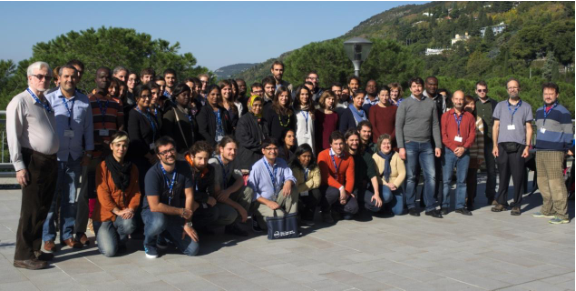
The School was attended by 61 people from 21 countries. Morning lecture sessions were followed by practical training in the afternoons using an open-source, integrated suite of software facilities for data manipulation, calculation, and graphical representation. The atmosphere during the School was excellent, with participants actively involved during lectures and training, collaborating on their practical work and exchanging experiences. All the speakers were very satisfied with the level of progress achieves by the participants during the school. The IUGG funds were used to support travel of three researchers from Cuba, India, and Nepal. For more information on the School, please visit the website: http://indico.ictp.it/event/7617.
Second Workshop on Climate Change, Variability, and Modeling over Central America and Mexico (14 - 18 November 2016, San Jose, Costa Rica)
Central America and Mexico are regions vulnerable to extreme climatic events that cause socio-economical disasters as well as disasters due to natural events. These regions have also been highlighted as some of the most vulnerable to climate change. Recent research within the WCRP-CORDEX project framework focused over Central America has shown that the use of regional climate models (RCMs) allows for a better representation of local climate features and meso-scale phenomena (for example, tropical cyclones) when compared with coarser resolution of global models. Therefore, RCMs can be valuable tools to study climate change over the region. The main purpose of the workshop was to provide extensive sessions focused on the analysis of climate variability and climatic change over Central America and on the use of the RCMs (and specifically the ICTP model RegCM4) as a tool for studies of climate-related phenomena at high resolution. This workshop included theoretical lectures on climate variability and change over Central America and Mexico, alongwith tutorial sessions on the use of the RegCM4 model over the region. An important aim for this workshop was to strengthen the community of users of the RegCM4 model in Mexico and Central America. A limited number of participants were selected, with proven experience in handling climate data and running climate models (in particular, RCMs), and with an interest in using the RegCM4 as a tool for regional climatestudies. IUGG funds supported participation of three students and a post-doc from Colombia (young female student), Jamaica (postdoctoral researcher and female student), and Mexico (female student). For more information on the workshop, please visit the website: http://indico.ictp.it/event/7621.
4. News from the International Council for Science
Advancing the implementation of Sustainable Development Goal 11 on cities in Africa
As part of the 5-year "Leading Integrated Research for Agenda 2030 in Africa (LIRA 2030 Africa)" program, the International Council for Science (ICSU), in partnership with the Network of African Science Academies (NASAC) and the International Social Science Council (ISSC) will support 10 collaborative research projects acrossAfrica (to the value of up to 90,000 Euro each over two years) that will advance the implementation of the Sustainable Development Goal 11 (sustainable cities and communities) in Africa. The SDG 11 recognizes the central role of urbanization in sustainable development, and calls for making cities and human settlements inclusive, safe, resilient and sustainable. To stimulate and deliver the new knowledge required in the practice of sustainable urban development, LIRA 2030 Africa launches a call for pre-proposals to identify research projects that will explore the development of new approaches and strategies towards the innovative re thinking of urban futures - in partnership with local authorities, industry, communities, and government. The deadline for pre-proposal submission is 17 April 2017. For more information:http://www.icsu.org/what-we-do/projects-activities/leading-integrated-re...africa/call-for-pre-proposals-2017
Launching a Knowledge Action Network on Oceans
At the first preparatory meeting for the UN Oceans Conference to be held in June 2017, the Scientific and Technological Community made a statement announcing the launch of a Knowledge Action Network on Oceans and called for strong partnerships between science and all sectors of society. The statement was presented by Craig Starger of Future Earth on behalf of the Community, which ICSU co-organizes at the UN. For more information: http://www.icsu.org/news-centre/news/scientific-and-technological-community-delivers-statement-at-united-nations-on-oceans
Source: ICSU website
5. Awards and Honors
IUGG Fellow E. Robert Engdahl (University of Colorado, Boulder, USA; IASPEI President, 2003-2007) has been awarded the IASPEI Medal 2017 for ground-breaking contributions to seismology and our understanding of the Earth.
Lynne Talley (Distinguished Professor at Scripps Institution of Oceanography, University of California, San Diego, USA) is the IAPSO Prince Albert I Medal recipient 2017 for her seminal contributions to our understanding of all ocean basins, including landmark discoveries in the Pacific, Atlantic and Southern Oceans. The Award ceremony, will take place on August 31, 2017, at the IAPSO-IAMAS-IAGA Joint Assembly in Cape Town, during which Prof. Talley will deliver the Albert I Memorial Lecture.
6. Obituary
Stanley Ruttenberg (1926-2017)
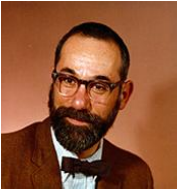
Stanley Ruttenberg, Secretary General of the International Association of Meteorology and Atmospheric Physics (IAMAP, now IAMAS) from 1975-1987, died in Boulder, Colorado, USA on 12 February 2017. He was 90. Born in St. Paul, Minnesota, he received his Bachelor of Sciences degree in Physicsfrom the Massachusetts Institute of Technology in 1946 and his Master’s from UCLA in 1951. Stan’s career began at the National Academy of Science in Washington, D.C., where he was Technical Advisor and production team member of the award winning series “Planet Earth” in 1960-62 (updated in 1980-85).
Stan was Head of the Program Office for the U.S National Committee for the International Geophysical Year (IGY) and was Executive Secretary to its follow-on program, the International Year of the Quiet Sun (IQSY). Through the IGY, he became acquainted with Walter Orr Roberts, who invited Stan to work at theNational Center for Atmospheric Research (NCAR) in Boulder. At NCAR, he organized many international workshops and served a tour of duty in 1970-71 at the World Meteorological Organization (WMO) headquarters in Geneva, Switzerland. Starting in 1983, Stan was Scientific Advisor to the NASA AdvisoryCouncil's Earth System Science Committee (ESSC), which identified key research questions and priorities for studying climate change. Stan was the assistant to the Joint Planning Staff for the Global Atmospheric Research Program (GARP), and oversaw the student program in the GARP Atlantic Tropical Experiment (GATE). He also served as the Chairman of the Panel on World Data Centers of the International Council for Science (ICSU). After a 30-year career at NCAR, Stan retired in 1994 but continued to stay involved in the scientific community. Music was a significant part of Stan’s life. He never missed a chance to attend a symphony or opera performance wherever his travels took him. As he eased out of work travel, he began to organize travel around specific performance events, and racked up many a Wagner Ring cycle. He served as President of the Colorado MahlerFest and held that position for 15 years. Stan enjoyed many adventures with his wife, Patricia Lee, for nearly 50 years. They had two daughters, Alison and Rebecca, and shared a love of classical music, gourmet cooking and learning about the world. Stan is remembered for his diplomacy and mentorship in all of his spheres of influence, and for his boundless energy in ‘getting things done’. He leaves as his legacy his vision and ability to ‘think outside the box’ (Becky Ruttenberg and JoAnn Joselyn).
7. Meeting calendar
A calendar of meetings of interest to IUGG disciplines (especially those organized by IUGG Associations) is posted on the IUGG website (http://www.iugg.org/calendar.php). Individual Associations also list more meetings on their websites according to their disciplines.
April
-3-7, IAG, ISPRS, Rosario, Argentina, 1st International Symposium – Applied Geomatics and Geospatial Solutions.
Web: http://www.geodata2017.com.ar/index.php/en
-18-21, IAHS, UNESCO, New Delhi, India, International Conference on the Status and Future of the World's Large Rivers.
Web: http://worldslargerivers.boku.ac.at/wlr/
-23-25, IGU, La Paz, Bolivia, Geographies for Peace 2017.
Web: http://igu-online.org/geographies-for-peace-geografias-para-la-paz-igu-ugi-thematic-conference-23-25-april-2017/
-23-28, EGU, Vienna, Austria, European Geosciences Union General Assembly 2017.Web: http://www.egu2017.eu/
May
-17-19, IAG, Wroclaw, Poland, EUREF 2017 Symposium. Web: http://www.igig.up.wroc.pl/euref2017
-20-25, JpGU, AGU, Makuhari, Japan, JpGU-AGU Joint Meeting 2017. Web: http://www.jpgu.org/meeting_e2 017/
-22-24, IAG, London, UK, DORIS Analysis Working Group meeting (AWG) of the International DORIS Service. Web: http://ids-doris.org/ids/reports-mails/meeting-presentations/ids-awg-05-2017.html
-22-26, UNISDR, Cancun, Mexico, 2017 Global Platform for Disaster Risk Reduction.Web: http://www.unisdr.org/conferences/2017/globalplatform/en
-22 May – 2 June, ICTP, IUGG, Trieste, Italy, Extended Workshop on Space Weather Effects on GNSS Operations. Web: http://indico.ictp.it/event/7964/
-29 May – 2 June, ILC, Ljubljana, Slovenia, The Fourth World Landslides Forum 2017. Web: https://www.wlf4.org/
-31 May – 2 June, GEO, College Park, MD, USA, 3rd Blue Planet Symposium. Web: http://symposium.geoblueplanet.com/
June
-6-9, ISPRS, Hanover, Germany, ISPRS Hannover Workshop 2017. Web: https://www.ipi.uni-hannover.de/hrigi17.html
-11-17, IACS, SCAR, Fort Collins, CO, USA, 2017 Glacial Seismology Training School. Web: http://polenet.org/?page_id=2769
-12-23, ICTP, IUGG, Trieste, Italy, Fourth Workshop on Water Resources in Developing Countries: Hydroclimate Modeling and Analysis Tools.
Web: http://indico.ictp.it/event/7969/
-18-23, IAHS, UNESCO, Birmingham, UK, HydroEco 2017: The 7th International Multidisciplinary Conference on Hydrology and Ecology.
Web: http://www.birmingham.ac.uk/generic/hydroeco2017/index.aspx
-25-30, IAMAS, Helsinki, Finland, ICNAA2017 - 20th International Conference on Nucleation and Atmospheric Aerosols. Web: http://www.icnaa2017.net/
-26-30, CTBTO, Vienna, Austria, The CTBT: Science and Technology 2017 Conference (SnT2017). Web: https://ctnw.ctbto.org/DMZ/snt2017.html
IUGG Electronic Journal Volume 17 Number 4 (1 April 2017)
Editors: Tom Beer, Alik Ismail-Zadeh (Editor-in-Chief), Franz Kuglitsch (Associate Editor), and Kathryn Whaler.
If you no longer wish to receive the IUGG Electronic Journal, please send an email to the IUGG Secretariat (secretariat@iugg.org).
